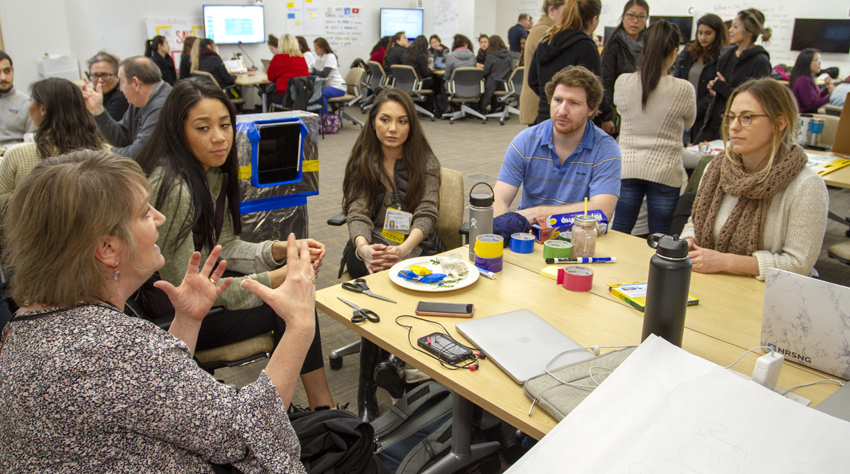Future nurses rethink how to quit smoking
Former smokers and tobacco treatment experts partner with nursing students to design innovative solutions to stop tobacco use

Cari Shulkin, left, a UC Davis Health nurse and tobacco treatment specialist, works with entry-level nursing students to design solutions to aid smokers in kicking the habit.
After more than 37 years of smoking, Michael Kessler kicked the habit. With the help of the SToP: Stop Tobacco Program at UC Davis Health, he gained the knowledge, tools and confidence to quit.
“I set my mind to it and went at it,” Kessler says. “I’ve been smoke-free now for one year, two months and 20 days.”
Once a learner in the UC Davis Health cessation class, Kessler now serves as a teacher, of sorts, in an innovative course for prelicensure nursing students at the Betty Irene Moore School of Nursing at UC Davis.
“The overall philosophy behind this class is that we really engage students in learning about innovation and technology and how to use the techniques to solve real-world problems,” explains Katherine Kim, the assistant professor who teaches the Technology and Innovations in Health Care class. “We got former patients to be part of the design teams, so students could get that instant feedback to learn about the issues and solutions that might really work.”
SToP participants, along with specialists from the tobacco treatment program at UC Davis Comprehensive Cancer Center and UC Quits, partnered with Kim in this interdisciplinary, interdepartmental approach to looking at innovation in smoking cessation.
“There are a lot of old-timers in tobacco cessation research,” says Elisa Tong, UC Davis Health tobacco researcher and physician who serves as project director for UC Quits, a collaboration between all five UC Health systems and CA Quits, a 5-year, $6 million-dollar grant to assist safety-net health systems with integration of tobacco treatment services. “This class takes different topics in tobacco control and innovates on them. Nursing students bring a fresh perspective to this work.”
The Master’s Entry Program in Nursing students used markers, pipe cleaners and aluminum foil to create solutions not currently available. From a nicotine lozenge dispenser to a cash register that limits the sale of cigarettes near schools after school hours, students researched the issues and let creativity guide them.
“I think being able to use these different tactile items and different kinds of media really helped people come up with better ideas,” says student Breanna Harris. “We’ve got robots and poster board. It’s awesome and illustrates what we’ve gone over in the literature.”
Kim’s course uses a multidisciplinary approach including nursing, medicine, social and behavioral sciences, as well as information technology and engineering perspectives to stimulate new thinking in the practice, process and delivery of health care. She looked to Terri Wolf, a master’s-degree leadership alumna of the School of Nursing and cessation program manager at the cancer center, in this year’s collaboration.
“We’ve been dealing with smoking cessation and the problems it causes. It’s time to innovate,” Wolf says. “To see these students in action taking on leadership, innovation and design is inspiring.”





